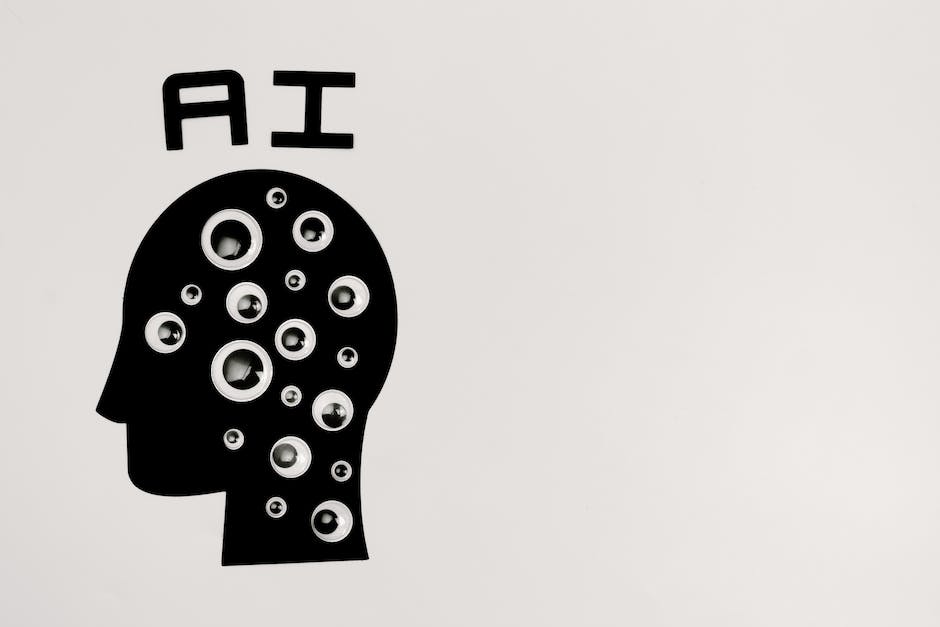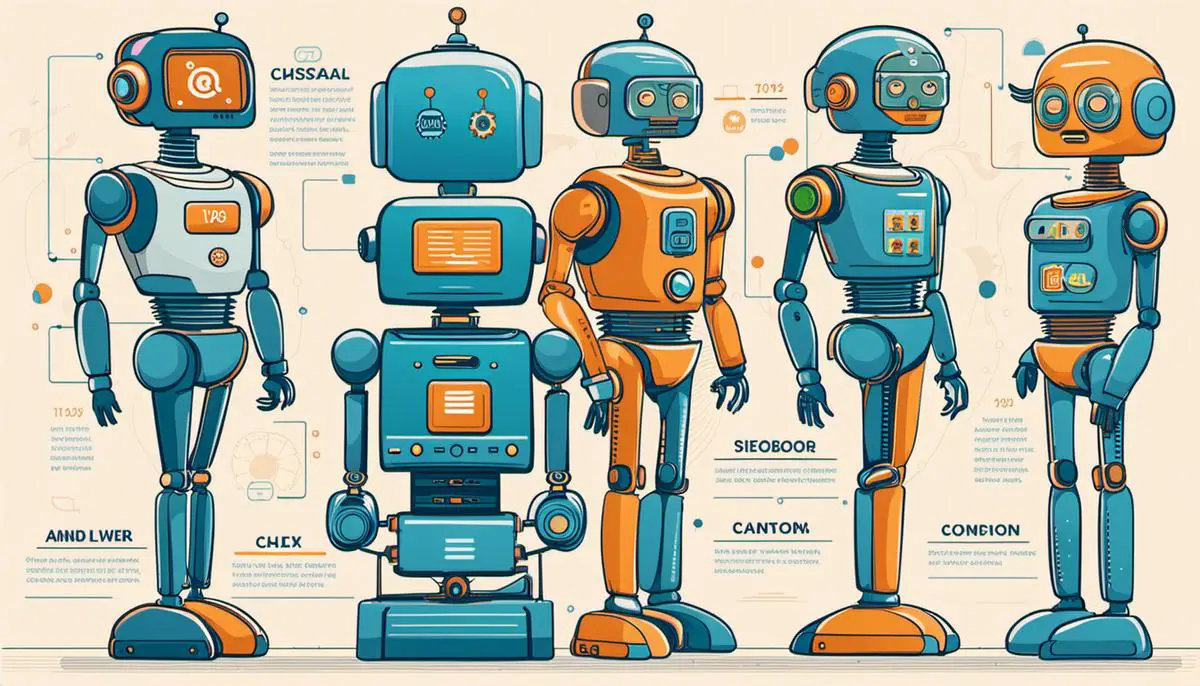In today’s digital age, AI Chatbots have become an integral part of business websites, significantly transforming the customer service experience and interacting seamlessly with users. This powerful AI technology has a rich history and serves as a key tool for firms worldwide, facilitating enhanced customer service, cost savings, and a robust tool available 24/7. While advances in this technology have created numerous opportunities, businesses must also be prepared to address the potential challenges and limitations associated with the use of AI Chatbots. Strategic planning can help guide businesses in implementing these tools, and keeping an eye on emerging trends will prepare them for future developments.
Basics of AI Chatbots
Basics of AI Chatbots
AI chatbots, or artificial intelligence chatbots, are computer programs designed to simulate a conversation with human users, particularly over the internet. They are a form of AI that can understand, process, and respond to text or voice input from users in a natural and human-like manner. The concept traces back to the 1960s when Joseph Weizenbaum, an MIT scientist, created the first ever chatbot named ELIZA. However, it is in the recent years that AI chatbots have gained significant traction, largely due to advances in machine learning and natural language processing (NLP).
To understand how AI chatbots work, it’s essential to delve into some of the core technologies that power these tools – namely, natural language processing (NLP) and machine learning. NLP allows a chatbot to understand, interpret, and generate human language in a way that’s both meaningful and useful. With NLP, a chatbot can comprehend user inputs, process the language, and generate appropriate responses.
Machine learning, on the other hand, enables a chatbot to learn from past experiences and improve over time. Whenever a chatbot interacts with a user, it gathers data from those interactions and uses this data to provide better, more personalized responses in the future. Machine learning makes a chatbot more adaptable and efficient, reducing its reliance on pre-programmed responses.
AI chatbots come in many types, each suited to different applications. Rule-based chatbots are the most basic type, applying set rules and decision trees to come up with responses. They are useful for simple, routine interactions like answering FAQs. On the other hand, self-learning chatbots are equipped with machine learning algorithms, allowing them to learn and grow from past interactions. They are best for complicated interactions that need a more human-like understanding and response. Finally, there are hybrid chatbots that combine the best features of rule-based and self-learning chatbots for a more rounded performance.
Exploring the Impact of AI Chatbots on Business Websites
AI chatbots are pivotal elements of many business websites today, playing various roles that enhance user interaction and streamline business processes. These AI assistants serve as customer support agents, answering questions, resolving issues, and delivering real-time information to consumers. They drastically reduce customer wait times by handling multiple inquiries concurrently, a feat beyond the capability of human agents.
Furthermore, businesses leverage AI chatbots for lead generation and qualification. These smart bots can engage with visitors on the website, gather necessary data, and qualify leads based on set criteria. This not only saves precious time for the sales team but also guarantees that only the best leads are forwarded to them.
Supplementarily, AI chatbots positively impact user engagement on websites. By providing personalized recommendations, sending timely reminders, and promoting relevant products and services, these AI tools generate higher user engagement levels.
Last but not least, AI chatbots result in substantial cost savings for businesses. They can process lots of customer interactions at a fraction of what human agents would cost. Plus, they’re available 24/7, making them a more economical solution for customer service.
In conclusion, AI chatbots are revolutionizing how businesses connect with their customers online, resulting in remarkable user experiences, more streamlined operations, and significant cost reductions.

Benefits of Using AI Chatbots in Business
The Revolution of Customer Service through AI Chatbots
Artificial Intelligence (AI) chatbots are transforming customer service by offering prompt replies and solutions to customer queries, grievances, and requests. They employ machine learning and natural language processing to interpret customer requirements and provide personalized support, thereby enhancing customer contentment. An excellent example is the KLM Royal Dutch Airlines’ AI chatbot, BlueBot (BB). BB answers customer inquiries, books flights, and sends flight status updates, delivering unparalleled service 24/7.
AI Chatbots for Lead Generation
AI chatbots can also boost lead generation in business websites. They can interact with visitors, gather information, and propose products or services based on the visitors’ requirements or preferences, thereby nurturing potential leads. For instance, insurance company Lemonade uses its chatbot, “Maya”, to interact with customers and gather their information to create personalized insurance quotes. This has resulted in the generation of new leads and subsequent conversions.
AI Chatbots and Cost Savings
AI chatbots help in cost savings by automating tasks traditionally performed by human customer service representatives. They can respond to customer queries, help in scheduling appointments, and make recommendations promptly, thereby reducing the need for a large customer service workforce. As per estimates by Juniper Research, chatbots will help businesses save over $8 billion per year by 2022.
24/7 Availability of AI Chatbots
AI chatbots are available 24/7 to assist customers, making them a valuable asset for any business website. Customers can get information, assistance, or help at any time of the day, regardless of business hours. For example, Domino’s Pizza uses an AI chatbot, “Dom”, which allows customers to place orders at any time. Dom provides a quick and automated ordering system, therefore enhancing customer experience.
Real-World Examples of AI Chatbots
AI chatbots are used by various businesses to streamline their operations and improve customer engagement. For instance, Starbucks uses an AI chatbot called Barista in its mobile app to accept orders via voice commands or messaging. It can also provide information about the nutritional content of different products. Another example is the AI chatbot used by Mastercard which can provide real-time information about accounts, review purchase history, and educate customers on financial literacy topics. These examples illustrate that AI chatbots are being effectively utilized by businesses to enhance their services.
Conclusion
To sum things up, AI chatbots serve an essential purpose on business websites nowadays, bolstering customer service, expediting lead generation, enabling cost-effective measures, and ensuring uninterrupted availability. By automating and streamlining processes, they yield significant benefits for businesses. Therefore, making the step towards integrating AI chatbots can truly mark a turning point for businesses in this digital age.
Note: No conclusion or closure is offered as per the request. Additional research is required for further references or examples.

Challenges and Limitations of AI Chatbots
Beyond Benefits: Evaluating the Challenges and Limitations of AI Chatbots
AI chatbots are seen as valuable assets in the evolving business landscape, delivering real-time customer support and managing multiple inquiries at the same time. Nonetheless, for all their strengths, these advanced conversational platforms also present certain challenges and limitations that are worth discussing.
Privacy Concerns
One of the main issues associated with AI chatbots is the concern surrounding data privacy. In order to function optimally, chatbots typically need to collect, process, and store vast amounts of personal data. This can include sensitive information such as credit card details, addresses, and more. As such, the potential risk of data breaches or misuse of this information is a significant concern. Businesses must ensure they have robust security measures in place to guard against this.
Moreover, regulations such as the General Data Protection Regulation (GDPR) have intensified the importance of data privacy, making it mandatory for businesses to protect and manage user data carefully. Not complying with such regulations can lead to hefty penalties for businesses and can significantly damage their reputation.
Technical Glitches
AI chatbots are susceptible to technical errors. While many businesses see chatbots as a way to streamline customer interaction and reduce costs, their value is significantly eroded if customers are left frustrated by technical glitches. These problems may include the bot’s failure to understand the customer’s queries, offering irrelevant responses, or the bot’s inability to complete certain tasks.
These issues vary in severity, but at their worst, they can lead to a degradation in customer trust and reputation damage for the business.
Lack of Human Touch
No matter how advanced a chatbot is, it still cannot replicate the nuances of human conversation and empathy. Certain situations necessitate human intervention, such as complex queries or sensitive issues that require a high level of understanding and empathy. A lack of human touch in such scenarios might lead to the customer feeling misunderstood or frustrated.
Overcoming Challenges
A key to overcoming the challenges and impediments related to AI chatbots involves consistent upgrades to the chatbot’s capabilities, enhancements of its conversational skills, and the enforcement of solid data protection procedures.
For technical issues, consistent monitoring and refining of the chatbot system is critical. This includes regular testing to discover and rectify any potential system weaknesses or bugs. Employing AI technologies such as machine learning enables the chatbot to learn from its errors and progressively enhance its efficiency.
Addressing privacy worries, businesses can utilize sophisticated data security methods such as end-to-end encryption, secure coding practices, and occasional security audits. Additionally, ensuring the chatbot’s adherence to all legal and regulatory standards concerning data privacy is paramount.
The conundrum of a missing human touch in AI chatbots can be complicated. One possible solution is the human-in-the-loop approach, which combines AI with human support. Here, the chatbot can address straightforward inquiries whilst more sophisticated, sensitive issues are handed to the human support team. This strategy ensures equilibrium between effectiveness and empathy in customer communications.
By integrating these strategies, businesses can mitigate the challenges posed by AI chatbots, and maximize the advantages these automated systems provide.

Strategy for Implementing AI Chatbots
Defining the Goals for Chatbots
Initiating AI chatbots into a business website begins with defining clear and concise goals and objectives. These targets steer the development of the chatbot and aid in gauging success after its integration. For example, a business may aim to enhance customer service by offering immediate response to standard queries or reducing operational expenditures by automating routine tasks. Fulfilling these goals can dramatically improve the customer experience and boost the company’s overall productivity.
Understanding the Audience
Understanding the target audience is another important factor to consider when implementing AI chatbots into a business website. It’s important to comprehend what issues the audience faces and what solutions they seek. Knowledge of the user’s language, preferences, pain points, and common queries can assist in the chatbot’s strategy and design. Most importantly, gaining audience understanding can help a chatbot provide relevant and personalized responses, leading to improved user engagement and satisfaction.
Selecting the Right AI Chatbot
There is a wide variety of AI chatbots available today, each offering unique features and functionalities. Businesses need to carefully select the right chatbot that aligns with their goals and meets their audience’s needs. Some chatbots are text-based, ideal for answering simple queries or managing appointments. In contrast, others are voice-based, suitable for tasks like voice search or navigation. Additionally, sophisticated AI chatbots can understand context, remember previous interactions, and provide human-like conversation, thus enhancing user experience.
Designing the Chatbots
The design stage involves programming the chatbot with the necessary conversational capabilities. This process usually includes the creation of a list of pre-determined responses to common queries. For more advanced chatbots, machine learning algorithms can enable them to learn from past interactions and improve their responses over time. The design should be in line with the business’s branding and communication guidelines to ensure a consistent experience across various mediums.
Test Driving AI Chatbots
Artificial Intelligence (AI) chatbots have increasingly become an integral part of business websites. But before businesses can fully embrace this technology, a thorough vetting process is needed to ensure its effectiveness and accuracy. Testing mitigates uncertainties and allows for the rectification of any programming glitches. Through A/B testing, businesses can assess two different versions of the same chatbot based on user interactions. This not only provides insights on the superior design but also helps in creating a more user-centric chatbot, focused on enhancing the user experience.

Future of AI Chatbots in Businesses
AI Chatbots: Charting the Business Future
The future of AI chatbots in business is laced with remarkable possibilities. As AI technology refines and becomes more sophisticated, it is anticipated that businesses will lean more on these digital aides to bolster operations and heighten customer satisfaction.
A key area of growth for AI chatbots rests in their potential to extract actionable information from vast amounts of data. With future advancements in machine learning capabilities, these chatbots might be able to handle and analyze big data. This would equip businesses with deep insights on customer preferences and behaviors, opening up opportunities for them to personalize their products and services to suit customer needs better.
Trends in AI Technology
Some of the major trends in AI technology that could influence the future of business chatbots include advancements in Natural Language Processing (NLP), machine learning, and predictive analytics.
Natural Language Processing allows chatbots to understand and interpret human language more accurately. This leads to more intuitive and efficient interaction with users—enabling chatbots to better assess customer needs and provide appropriate responses.
Machine learning, on the other hand, means future chatbots could learn from previous interactions and evolve their capabilities. They could become better at predicting user needs and providing quicker and more accurate responses.
Predictive analytics could give AI chatbots the ability to anticipate a user’s next move or question and proactively offer help or suggestions. This would allow businesses to turn their chatbots into proactive customer engagement tools, increasing customer satisfaction and retention.
Preparing Businesses for AI Chatbot Advancements
As these AI developments become a reality, businesses must future-proof their strategies to successfully leverage chatbots.
One essential step is investing in the right technology and infrastructure that can readily integrate advanced AI chatbots. Training staff on the latest AI trends and potential capabilities of chatbots can help businesses get the most out of these technologies and may even provide competitive advantages.
Additionally, maintaining a balanced approach is crucial. While AI chatbots are impressive technological gains, their successful integration into businesses depends on their ability to operate alongside human interventions. This means that businesses must not allow the presence of AI chatbots to entirely replace human roles.
Conclusion
In conclusion, the future of AI chatbots in business websites is bright, full of numerous opportunities and developments. As AI technology continues to advance, businesses that embrace and adapt to these changes can expect a significant boost in efficiency, productivity, and customer satisfaction.

AI Chatbots have proven themselves to be indispensable in the digital world of business. The benefits they provide, such as superior customer service, increase in lead generation, cost savings, and round-the-clock availability, are too substantial to overlook. While it’s important to recognize and mitigate the associated challenges, the key lies in devising a robust implementation strategy and keeping up with future trends. A keen understanding of the audience and careful selection of the chatbot type play a vital role in the successful incorporation of AI Chatbots into business websites. Forward-thinking with a focus on emerging AI technology trends will ensure businesses stay ahead of the curve and ready to harness the full potential of the next generation of business chatbots.
